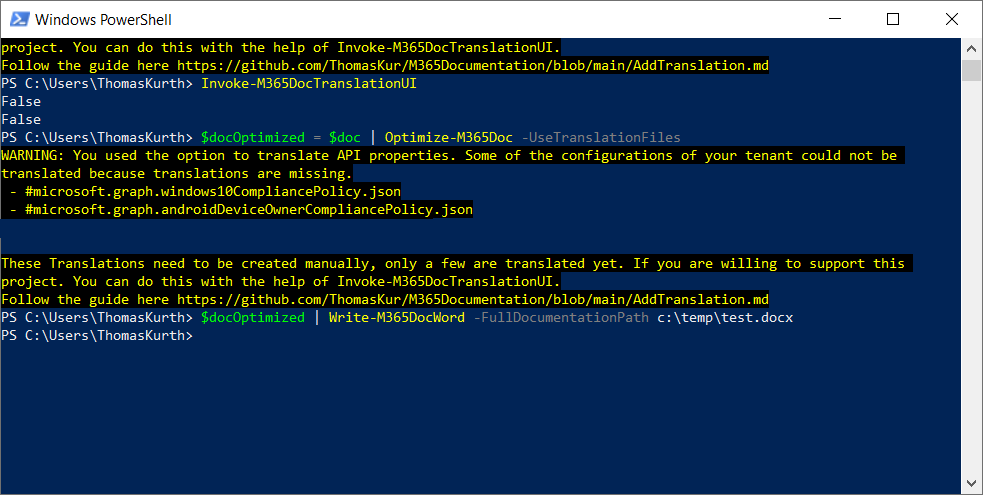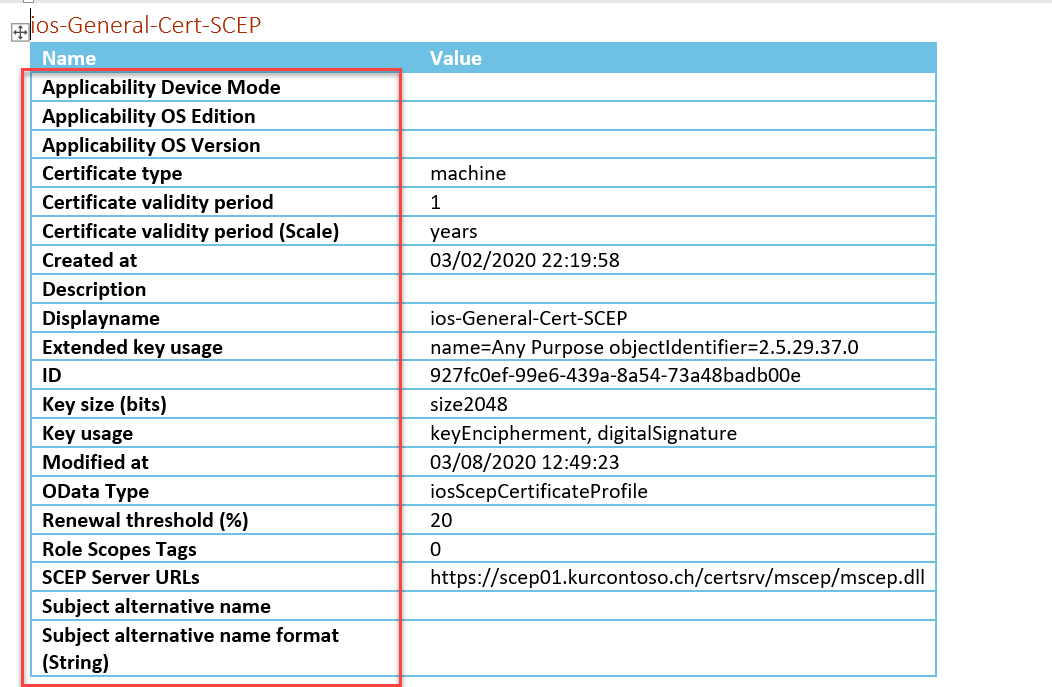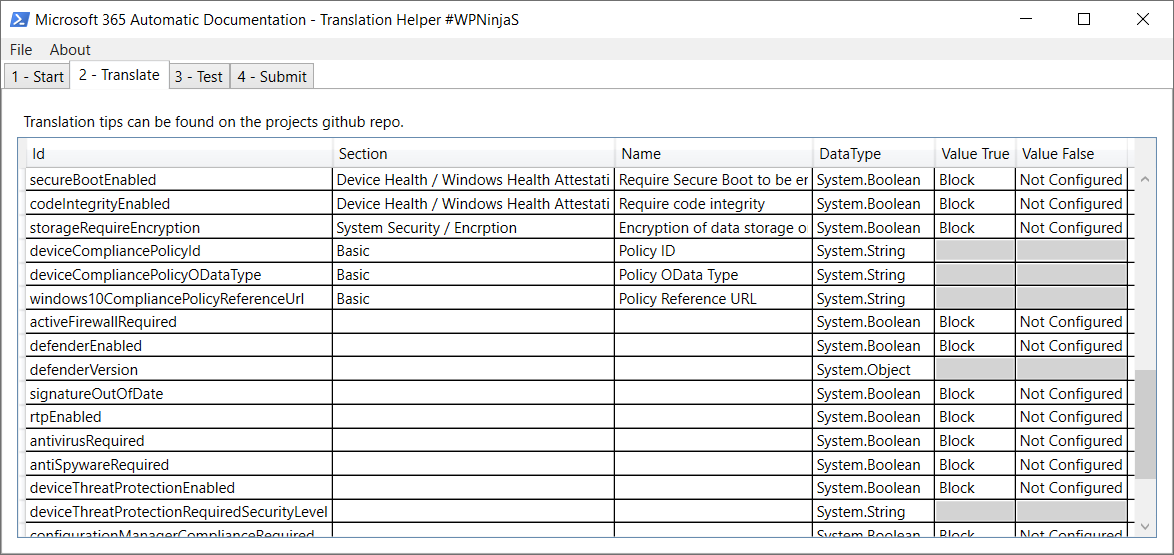When using the Optimize-M365Doc -UseTranslationFiles the OData api names will be translated to the labels used in the Microsoft Portals. Some of the documented objects are not translated due to high effort which is needed to do this. But you can help translating them and make the project better for everybody. With the new Invoke-M365DocTranslationUI command this is really simple.
-
Use the exact same name as it is in the Microsoft Portal
-
US English names
-
Section name
- Use "Basic" or Empty when no section can be dedected in the Microsoft Portal
- Use "/" to separate Sub sections
| |
 | Click on Save for local testing. This saves the translation file into the local module directory. |
|
| Click on Save for local testing. This saves the translation file into the local module directory. |
|  | You can now execute the Optimize-M365Doc -UseTranslationFiles command again and create a new Word documentation file. |
|
| You can now execute the Optimize-M365Doc -UseTranslationFiles command again and create a new Word documentation file. |
|  | Open the newly created Wiord file and check if the translation is as wished. If yes continue to the next step. Otherwise go back to step 6. |
|
| Open the newly created Wiord file and check if the translation is as wished. If yes continue to the next step. Otherwise go back to step 6. |
|  | Start the Invoke-M365DocTranslationUI again and select the translated OData api name and then submit the translation in the 4 - Submit register. |
| Start the Invoke-M365DocTranslationUI again and select the translated OData api name and then submit the translation in the 4 - Submit register. |





